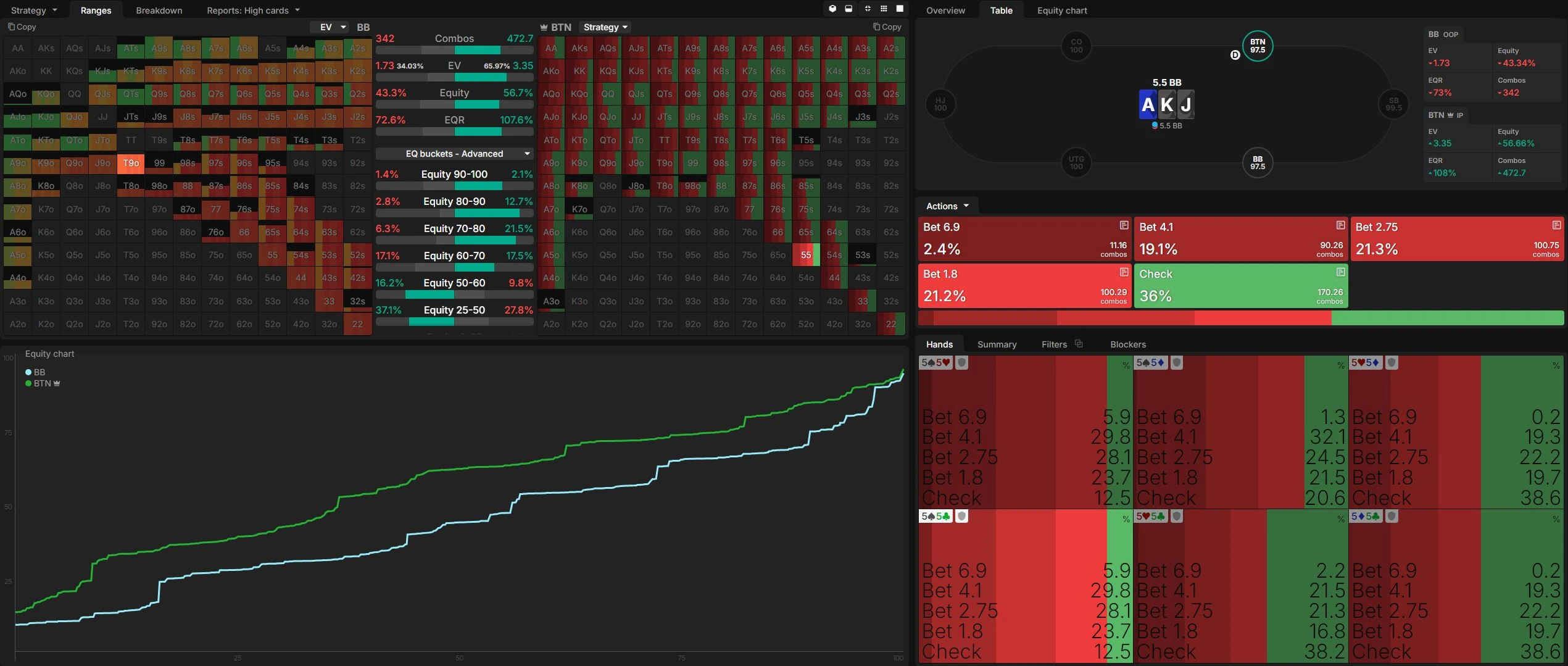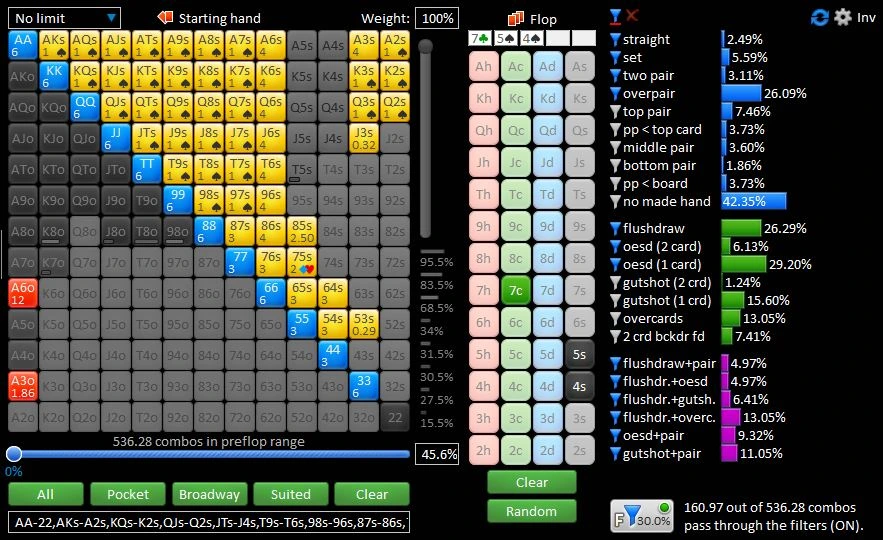Advanced Tactics for Continuation Bets

Apr 18, 2025
•
2 min read
It's one of the most challenging parts of the game. You have to understand that every bet has a reason or a purpose.
- Phil Ivey
We last left off discussing advantage in relation to flop strategy. We learned about equity and nut advantage and how one does not necessarily imply the other. Now, we’ll connect these concepts to the most important flop play: the continuation bet.
Ready to learn all about it? Keep reading!
What is a Continuation Bet?
For the uninitiated, a c-bet refers to the preflop aggressor making the first bet on the flop. For example, BTN raises preflop, BB calls and a flop comes. BB checks and BTN makes a bet. That bet is a continuation bet.
When to CBet in Poker
Building on the previous lesson, when we have an equity and/or nut advantage. As the PFR, that actually covers most flops. However, let’s add on another stipulation: we have position. Even with the advantage, building the pot up out of turn can get dangerous.
So, assuming we’re in position, here’s a checklist to give you the green-light to fire that continuation bet:
- We’re heads-up. Multiway pots require more caution.
- The flop gives us an equity and/or nut advantage. This tends to be most flops, save for middling and low connected ones. For example, 765 monotone might warrant a check-back.
- We’re up against a fish! By definition, fish play too many hands so getting folds out of them isn’t that difficult. Use caution on connected flops since fish love playing connected hands pre specifically to flop that straight.
- When you’re out of position, place continuation bets with nutted hands, like 2p+ and semi-bluffs that can hit nutted hands, like strong flushes or straights.
C-Bet Strategy
In GTO theory, continuation betting frequencies and bet sizes stem from nut and equity advantage on the flop along with the likelihood of favorable cards to fall on the turn and river. While whole books can be written on the subject, so use the following heuristics when playing regs in position:
CBet often (always, or almost always) when you have an equity advantage and use a small size. For example, a 30% pot-sized bet requires 18.8% equity to continue against, or a minimum defense frequency of 76.9%. It’s easy to overfold, meaning you auto-profit with bluffs here.
Place a continuation bet often and with a large size when you have a nut & equity advantage, like on boards with face-cards, such as AKJ. This maximizes value and fold equity.

On boards that favor your opponent, like a 754 two-tone, choose your strongest made hands and bluffs with nut improvement potential to c-bet. Use a larger size since a board that favors your opponent makes them likely to continue.

When playing fish, just blast away on all boards except really connected ones like JT9 since fish love playing connected hands. Small sizings work great as bluffs, since fish will overfold. Use large sizes for value, like top-top or better, to extract more value when they continue.
Continuation Bets FAQs
When to Call Continuation Bets?
When the price is right and/or you have a bluff catcher. Against small sizes, sometimes overcards alone can be enough to call. Consider when you’d hate to get called when you’re the one c-betting!
What Is a Delayed C-Bet?
When the flop gets checked through the PFR then makes a bet on the turn, that bet becomes a delayed continuation bet. Delayed Cbets make for great bluffs when we choose to check the flop, especially in position, since our opponent signals weakness.
What Is a Good Continuation Bet Percentage?
Developing players love asking this because they compare stats with friends. There’s nothing concrete here, just depends on a player’s overall strategy. Some people have complex delayed CBet approaches since many players over-aggress when they perceive flop weakness.
Conclusion
Continuation bets in poker allow preflop raisers to make the most of their preflop equity advantage by continuing to aggress on the flop, since most flops benefit them more than a defender.
We recommend beginners consider equity and nut advantage when c-betting against regs. We also recommend lots of in position continuation betting against fish, especially for a large size when betting for value.
Beginners should focus on exploiting weaker players by punishing wide ranges post-flop. Small bets work well as bluffs, and since fish often call big bets like small ones, size up for value to maximize gains.
Good luck on the felt!
ZOOM IN
The following links are recommended resources related to this section’s theme. Don’t stay in doubt--dive in! 🔔
- C-Bets: You may want to check this continuation bet guide.
- Ranges: Learn how to calculate & use poker ranges.
- Betting: Learn more about how to bet in poker.
- MDF: Learn how to use the minimum defense frequency in poker.
- Discord Community: Join the coolest poker community, don’t be shy! Use it to ask questions and interact with other poker enthusiasts and professionals.